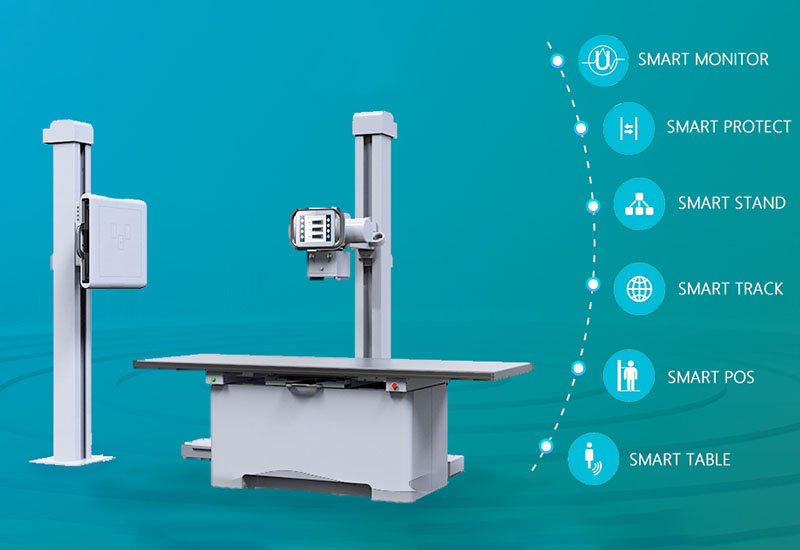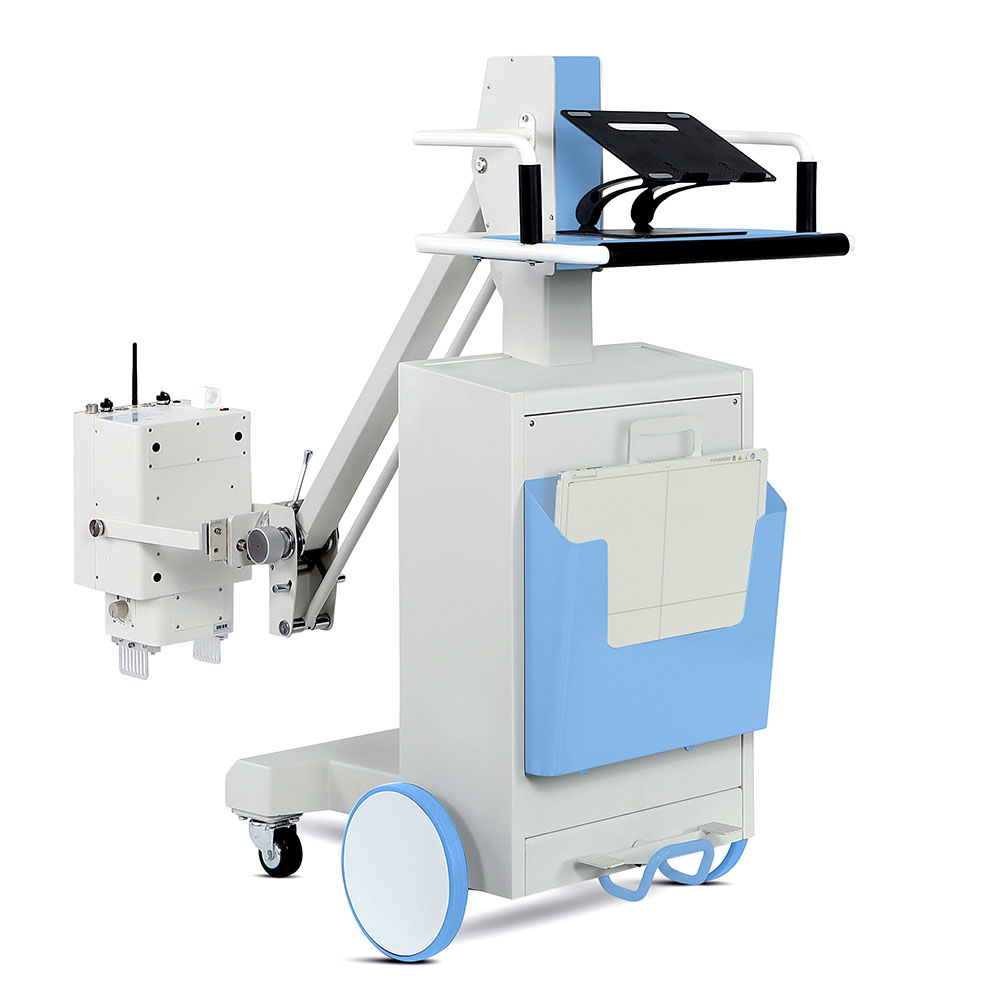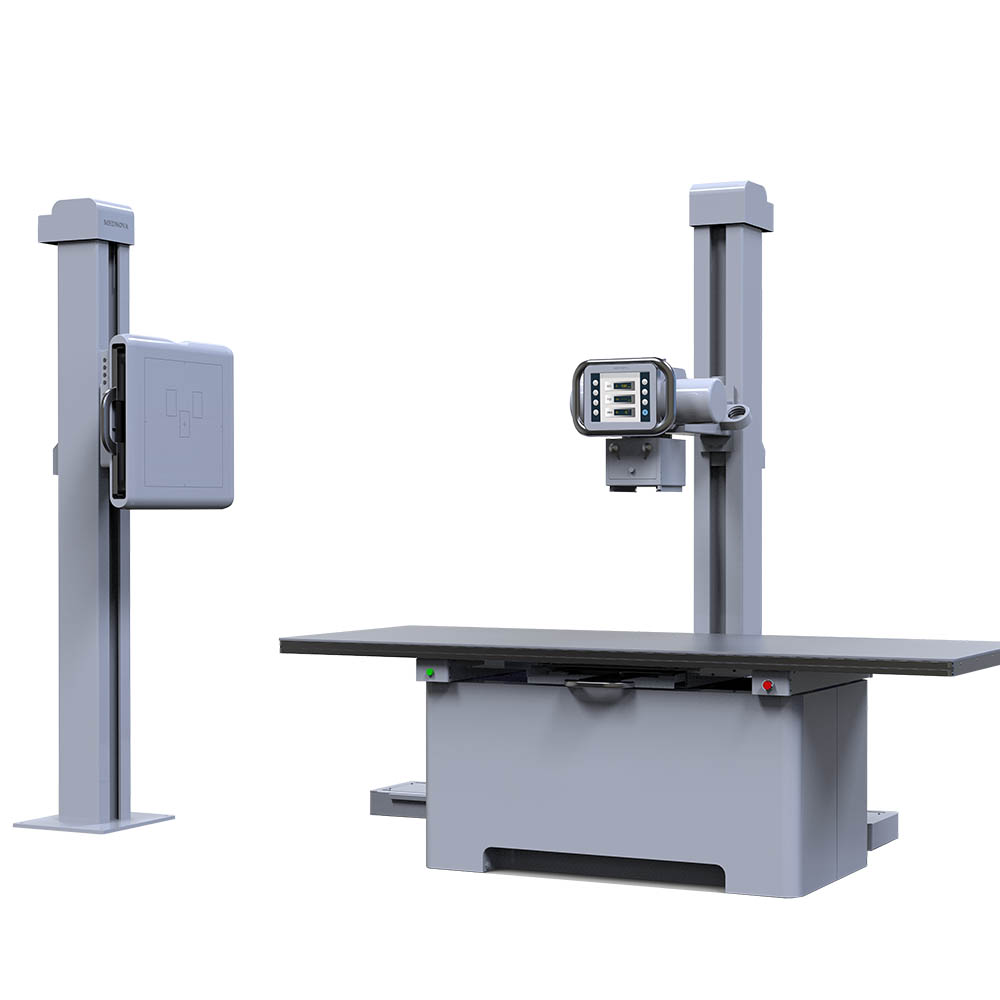Not satisfied with the unit price? Get a free quote on bulk quantities within 8 hours.
- Ward Nursing
- Emergency & First Aid Care
- OR Room & Apparatus
- Maternal & Child Care
- Medical Imaging
- Clinical Trial & LAB
- Vital Signs Monitoring System
- Rehabilitation Therapy
- Sterilization& Disinfection
- ENT& Aesthetic Equipment
- Medical Consumables
- Hospital Solution
- Hemodialysis
- Veterinary Equipment
- FDA Product
- CE Product
- Ward Nursing
- Emergency & First Aid Care
- OR Room & Apparatus
- Maternal & Child Care
- Medical Imaging
- Clinical Trial & LAB
- Vital Signs Monitoring System
- Rehabilitation Therapy
- Sterilization& Disinfection
- ENT& Aesthetic Equipment
- Medical Consumables
- Hospital Solution
- Hemodialysis
- Veterinary Equipment
- FDA Product
- CE Product
DR System: Source the Best Digital X-Ray Machine

Get Digital X-Ray Machine Catalog and Prices List
An x-ray machine is important as a diagnostic tool for medical professionals. It is used in Radiology to detect medical conditions which help in the diagnosis of the disease.
What is a digital x-ray machine?
Digital radiography, also shortened as digital x-ray, is an electronic form of radiography (medical imaging) that involves the use of digitalized or computerized image capturing to reproduce data directly on a computer system during the diagnosis or screening of a patient’s internal various health issues. In the transmission of captured data or signals (x-ray photons) unto a computer system to be realized as computerized or direct images, a digital x-ray machine makes use of sensitive plates or direct digital detectors instead of the conventional photographic films.
Other names for digital radiography machines include Digital Radiography System, Digital Radiography (DR) Equipment, DR system, DR Machine, and Digital X-Ray Imaging Equipment.
Differences between digital x-ray and conventional x-ray
Conventional x-ray is the predecessor of digital x-ray and has been around since the 1900s. While digital x-ray encompasses the use of solid-state, non-filmic detector sensors to capture the internal structure of the human body for easy diagnosis, the conventional radiography system uses pieces of film (as radiation detectors) to capture images of the patient’s internal body structure to reveal diverse health issues. Because of the difference in the use of radiation sensor detectors, there are observed differences between conventional and digital x-ray systems. These differences are discussed below.
Image Quality
One noticeable difference between traditional and digital radiography is in the quality of the images produced by the two radiography systems. The film, when used as a radiation detector, produces grainy and blurry reproduction of a patient’s body. Digital radiography, on the other hand, creates images of better quality that are clearer and sharper. This is because digital X-ray makes use of modern sensor plates capable of producing images of high resolution.
Image Archiving
Modern-day, digital radiography system has expanded storage facility. Large files are easily stored up and could be retrieved later with the option of sharing. This is because digital X-ray utilizes an unlimited virtual storage system where images can further be transferred to a hard drive afterward. This is not the case with conventional X-ray; filmic radiation detector, much more like printed photos, eats up a lot of storage space due to their large file size. It is, therefore, easier to keep records when using digital X-rays than it is when your health center makes use of a traditional radiography system.
Safety
Radiation that is emitted during diagnosis is considered a hazard to the body. Conventional X-ray is said to be safe by healthcare specialists in terms of emission of toxic radiation. But with digital radiography, it is generally believed that the toxic radiation is reduced by eighty percent. Digital X-ray is even relatively safer and less risky and the radiation level is believed to be much more reduced.
In addition to this, digital X-ray poses less threat to the environment. Conventional X-ray involves the use of film and chemicals in the processing of images and when these chemicals are disposed of as waste, they infringe on environmental safety. Digital X-ray, in the contrast, doesn’t make use of film or the chemical associated with it. It is therefore considered little or no threat to the environment and generally more eco-friendly.
Cost-Effectiveness and General Efficiency
For medical centers, using a conventional radiography system means investment in purchasing film and the chemicals involved in processing the images so captured. This consequently means more expenditure. On the other hand, digital X-ray is more cost-effective since there is no use for film as radiation detectors. In addition to being less expensive, digital X-ray is generally more efficient than traditional radiography. While the quality of images produced by traditional X-ray is low and fades over time, finished images created by digital X-ray are of high resolution and could be stored with unlimited storage space and can be retrieved without any damage done to the image over time. Moreover, while traditional X-ray is generally time-consuming, digital X-ray has proved to be more time-efficient than its counterpart. All these combined features ensure that digital X-ray is a more efficient option.
DR, CR, IDR, and DDR
Digitalized radiography is the latest form of medical imaging technology that has transformed the practices for the better due to its general efficiency and effectiveness over its predecessor. It includes digital radiography (DR), computed radiography (CR), indirect digital radiography (IDR) and direct digital radiography (DDR).
Digital Radiography (DR)
Digital radiography involves the use of sensor plates in detecting radiated data and hereby transfers such received data into finished images. In place of traditional radiography film, a digital capture device is employed in creating images. DR allows for immediate viewing and/or transferring of the finished images.
Computed Radiography (CR)
Computed radiography makes use of a photostimulable phosphor (PSP) plate to capture the image to create a digital image during diagnosis. Instead of a traditional X-ray film, the image is captured by photostimulated luminescence screens.
Indirect Digital Radiography (IDR)
With indirect digital radiography (IDR), reusable phosphor-coated plates are run through a scanner to obtain the digital image which would then be transferred to the computer system.
Direct Digital Radiography (DDR)
Direct digital radiography directly captures a digital image with the use of digital sensors known as photoconductor materials that are placed on a thin film transistor array.
Digital Radiography (DR) versus Computed Radiography (CR)
Digital radiography (CR) is the medical imaging technology that involves the use of sensor plates that read radiated data into finished images. Computed radiography (CR), on the other hand, makes use of phosphor image plates (photo-stimulable phosphor [PSP] plate to capture the image) to create a digital image. Despite both digital radiography (DR) and computed radiography (CR) being types of digital X-ray equipment, they differ in certain ways. The two systems of imaging technology in terms of image quality, initial cost, size of plates, portability and such other features. These differences are listed below.
Digital Radiography (DR)
- Better image quality
- More portable and compact
- More efficient
- Higher initial cost and costly parts
- Better image processing and viewing
- Higher replacement cost
- Lower image quality
- Lower initial cost
- Generally less efficient
- Consumes more storage size
- Slower image processing and viewing
- Lower replacement cost
Components of a DR system
- X-RAY GENERATOR
- X-RAY STAND
- POWER SUPPLY
- Flat Panel Detector (FPD with TFT technology)
- Image Processing Console cum workstation:
- Accessories (Glasses, clothing, gloves, cap, collar)
Types of digital x-ray machines
Mobile X-ray systems are essentially moveable, compact portable and generally smaller than fixed X-rays. They allow health practitioners to conduct radiography services without having to transfer patients into special lead-lined rooms. It can be used in places such as nursing homes and prisons.
Fixed A fixed-mobile radiography system is built in a special room and signed to perform all technological imaging in a clinic. Despite even though not supporting mobility, fixed DR makes up with certain advantages such as quick scan time and quality of the image.
Digital x-ray machine applications
(This is not the important part, just mention the keywords, one or two sentences are OK enough)
For its imaging devices, digital X-ray machine makes use of flat panel detectors, otherwise known as digital detector arrays (DDAs), which provide high quality images. These flat panel detectors can either convert data directly or indirectly: while the direct conversion involves the use of photoconductor materials that are placed on a thin film transistor array, indirect makes use of reusable phosphor-coated plates that are run through a scanner to obtain a finished image.
Factors to Consider Before Purchasing the right Digital x-ray machine
- Image Quality
- DR System Sizes
- Ease of use
- Scan time
- Sensor type
- Warranty
- Free space
- Software for your hardware
Ensure that the image quality is satisfactory before you buy any DR system for a better and clearer diagnosis. Some brands are known for the high resolution of the images produced. DEXIS, for instance, takes images in 16,000 shades of grey.
You might want to get a mobile or portable DR system to function well on “on the move” work.
Any DR system you might want to get should be simple and easy to handle and operate.
It is always better if a DR can produce diagnostic images promptly.
The size of the sensor is also of importance when purchasing a DR system. The better the size the more comfortable it is to use. Some sensor sizes are more adaptable and will fit in for both adults and children.
It is also necessary to get a DR which efficiency is warranted.
Before getting a DR, you might want to consider the storage capability. The higher the storage capacity is the better.
Pricing for DR x-ray systems
Popular DR X-ray brands include Hitachi, Hologic, Toshiba, Siemens Healthcare, Samsung, Medison, Carestream, Philips Healthcare, Shimadzu, Esaote, etc. The average general price for a new DR system ranges between $57,992.45 and $115,966.00. The price of General Electric DR systems generally ranges from $45k to $145k
Note: Apart from the General Electric Healthcare brand, prices of DR systems belonging to other brands are not easily determined. However, for the price range for most of these other brands and our purchasing of DR systems in bulk with wholesale pricing, go to Medwish.com
No posts found
Write a reviewRecent posts
- How Much Does a Video Laryngoscope System Cost?
- CPR Machine: How Much Does It Cost?
- Types Of Beds In Hospitals: Buy the Best Hospital Beds Online
- How Much Does an ICU Bed Cost?
- Find The Different Types of Medical Lighting Systems Online
- Complete Guide To Oxygen Therapy:Best Oxygen Machine
- What Is Durable Medical Equipment?
- Medical Stainless Steel Table: How to Choose the Suitable One for Hospitals
- Why Should You Upgrade Your Medical Equipment?
- How To Choose The Correct Armboard?
- Need Help?Talk to our Experts!
- Give Us A Call
- info@medwish.com
- Financial Service







